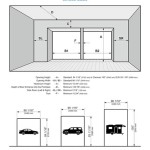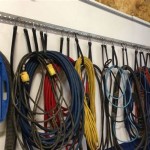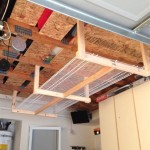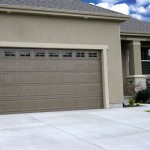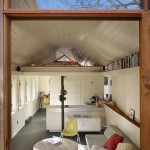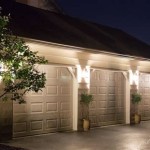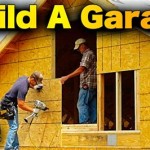Creating The Ultimate Garage Model
The garage, once relegated to a simple storage space for vehicles and discarded items, is undergoing a transformation. It is evolving into a versatile extension of the home, serving as a workshop, home gym, entertainment area, or even a home office. Designing the ultimate garage model requires careful planning and consideration of various factors, including available space, intended use, budget, and individual preferences. This article will explore the key elements in creating a functional and aesthetically pleasing garage that caters to specific needs.
Optimizing Garage Space and Layout
Effective space management is paramount in designing a successful garage model. The first step involves a thorough assessment of the existing space. Measure the dimensions of the garage, including the height of the ceiling, and create a floor plan. This plan will serve as the foundation for visualizing potential layouts and identifying areas for improvement. Consider the placement of doors, windows, and existing utilities (electrical outlets, water lines) as these will influence the overall design.
Vertical space is often underutilized in garages. Implementing vertical storage solutions, such as shelving units, cabinets, and wall-mounted racks, can significantly increase storage capacity without sacrificing valuable floor space. Shelving units can be used to store tools, equipment, and supplies, while cabinets provide enclosed storage for items that need to be protected from dust and moisture. Wall-mounted racks are ideal for storing bikes, ladders, and other bulky items.
Overhead storage systems are another effective way to maximize space. These systems typically consist of platforms or racks that are suspended from the ceiling, providing additional storage space for seasonal items, decorations, and other infrequently used items. The weight capacity of the overhead storage system must be carefully considered to ensure safety and prevent structural damage to the garage.
Garage layout should be tailored to its intended use. If the garage is primarily used for parking vehicles, ensure there is sufficient space for maneuvering and parking comfortably. If the garage is intended for use as a workshop, allocate adequate space for workbenches, tools, and equipment. It is important to create distinct zones within the garage to separate different activities. For example, a designated area for parking vehicles, a separate area for a workbench, and another area for storage.
The use of modular storage systems provides flexibility and adaptability. These systems typically consist of individual components that can be configured and rearranged to meet changing needs. Modular cabinets, workbenches, and shelving units can be easily moved and reconfigured as the garage's function evolves. This adaptability ensures the garage remains functional and organized over time.
Selecting Durable and Functional Materials
The materials used in the garage play a crucial role in its durability, functionality, and aesthetic appeal. Choosing the right materials can enhance the garage's resistance to wear and tear, improve its overall appearance, and contribute to a safer and more comfortable environment.
Garage flooring is a critical consideration. Concrete floors, while durable, are often porous and susceptible to staining, cracking, and dust. Applying a protective coating, such as epoxy or polyurethane, can significantly improve the floor's durability, resistance to stains, and ease of cleaning. Epoxy coatings are particularly popular for garage floors due to their durability, chemical resistance, and aesthetic appeal. Polyurethane coatings offer excellent flexibility and UV resistance, making them suitable for garages that are exposed to sunlight. Garage floor tiles, made from PVC or rubber, are another option. They provide a comfortable and slip-resistant surface and are easy to install.
Wall materials should be chosen for their durability and ease of maintenance. Drywall is a common material for garage walls, but it is susceptible to moisture damage and impact. Plywood or OSB (oriented strand board) are more durable alternatives that can withstand impacts and resist moisture. Covering the walls with a durable paint or sealant can further enhance their protection. Metal panels are another option for garage walls, offering excellent durability and a sleek, modern appearance.
Insulation is essential for maintaining a comfortable temperature in the garage, especially if it is used as a workshop or living space. Proper insulation can reduce energy consumption and prevent condensation, which can lead to mold and mildew growth. Fiberglass insulation, spray foam insulation, and rigid foam insulation are all viable options for garage walls and ceilings. The choice of insulation material will depend on the specific climate, budget, and desired level of insulation.
Garage doors are a significant component of the garage's overall appearance and functionality. Steel garage doors are durable and relatively inexpensive, while wood garage doors offer a classic aesthetic appeal. Insulated garage doors can improve energy efficiency and reduce noise transmission. The choice of garage door material and style should complement the overall design of the home and the garage's intended use. Automatic garage door openers provide convenience and security, allowing the door to be opened and closed with the touch of a button.
Incorporating Smart Technology and Safety Features
Integrating smart technology and safety features into the garage model can enhance its convenience, security, and overall functionality. Smart devices can automate various functions, such as lighting, temperature control, and security monitoring, while safety features can help prevent accidents and protect valuable assets.
Smart garage door openers allow users to remotely monitor and control the garage door from their smartphones or other devices. This feature can be particularly useful for allowing access to delivery personnel or contractors when the homeowner is not present. Some smart garage door openers also integrate with home security systems, providing enhanced security and peace of mind. Remote access also allows users to confirm the garage door is closed when away from home.
Smart lighting systems can be programmed to automatically turn on and off based on motion detection or a predetermined schedule. This can improve energy efficiency and enhance security by deterring potential intruders. Smart lights can also be controlled remotely, allowing homeowners to adjust the lighting levels from their smartphones or other devices. LEDs are recommended for garage lighting because they are more energy-efficient and long-lasting than traditional incandescent bulbs.
Security cameras can provide visual surveillance of the garage and surrounding areas. These cameras can be connected to a home security system or monitored remotely via a smartphone or computer. Motion detection sensors can trigger alerts when movement is detected in the garage, providing an early warning of potential security breaches. Security cameras can also record footage, which can be used as evidence in the event of a theft or other incident. Indoor/outdoor rated cameras are preferable for their durability in extreme temperatures.
Carbon monoxide detectors are essential for garages, especially those that are attached to the home. Carbon monoxide is a colorless and odorless gas that can be produced by running vehicles or other combustion appliances. Installing a carbon monoxide detector can provide an early warning of dangerous levels of the gas, allowing occupants to evacuate the area safely. Smoke detectors are also recommended for garages, especially if they are used as workshops or storage areas where flammable materials are present. Fire extinguishers are a necessary safety precaution and should be readily accessible in the garage.
Electrical safety should be a top priority when designing a garage. All electrical work should be performed by a qualified electrician and should comply with local electrical codes. Ground fault circuit interrupters (GFCIs) should be installed in all outlets that are located near water sources, such as sinks or hose bibs. Proper grounding is essential to prevent electrical shocks and fires. Extension cords should be used sparingly and should be rated for the intended use. Overloading electrical circuits can be dangerous and can lead to fires. Cable management systems can help to keep wires and cables organized and out of the way, reducing the risk of tripping hazards.
By carefully considering these factors and incorporating appropriate design elements, it is possible to create the ultimate garage model that meets specific needs and enhances the overall functionality and value of the home.

Creating The Ultimate Garage Belman Homes

How To Build The Ultimate Garage Diorama For Only 10 Full

Creating The Ultimate Garage Flex Space

How To Make Hot Wheels Diorama Dream Garage

How To Build The Ultimate Garage Work
.jpg?strip=all)
Creating The Ultimate Garage Work 10 Tips Ideas J N Structures

Creating The Ultimate Garage Flex Space

How To Build The Ultimate Garage Work

Building The Ultimate Garage

Hot Wheels Let S Race Ultimate Garage Mattel
Related Posts

